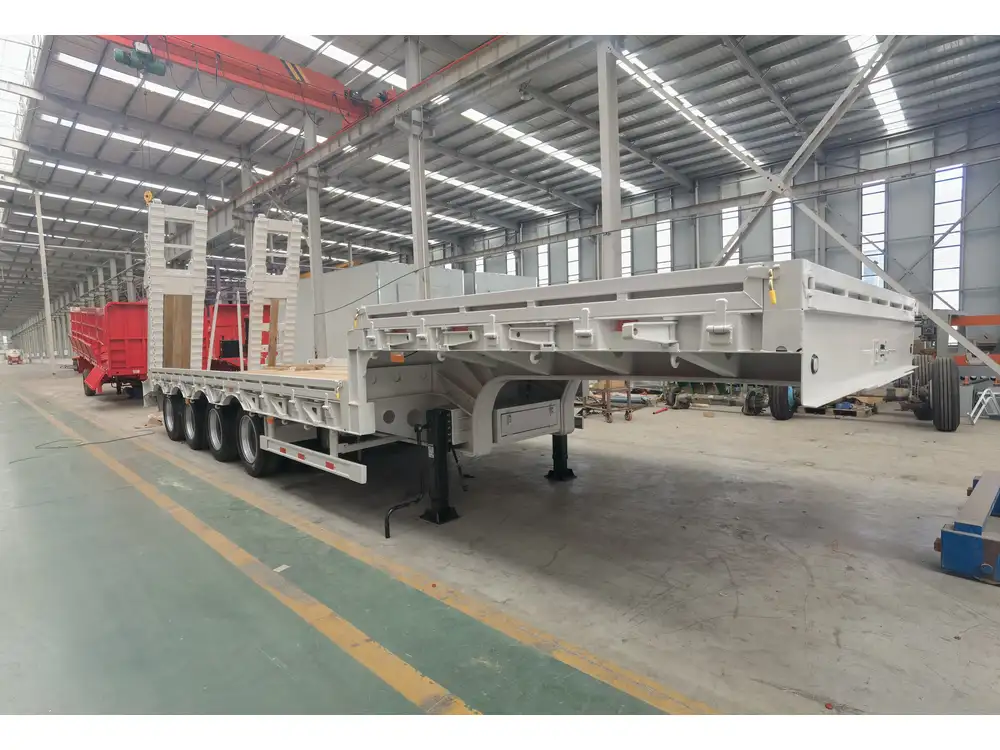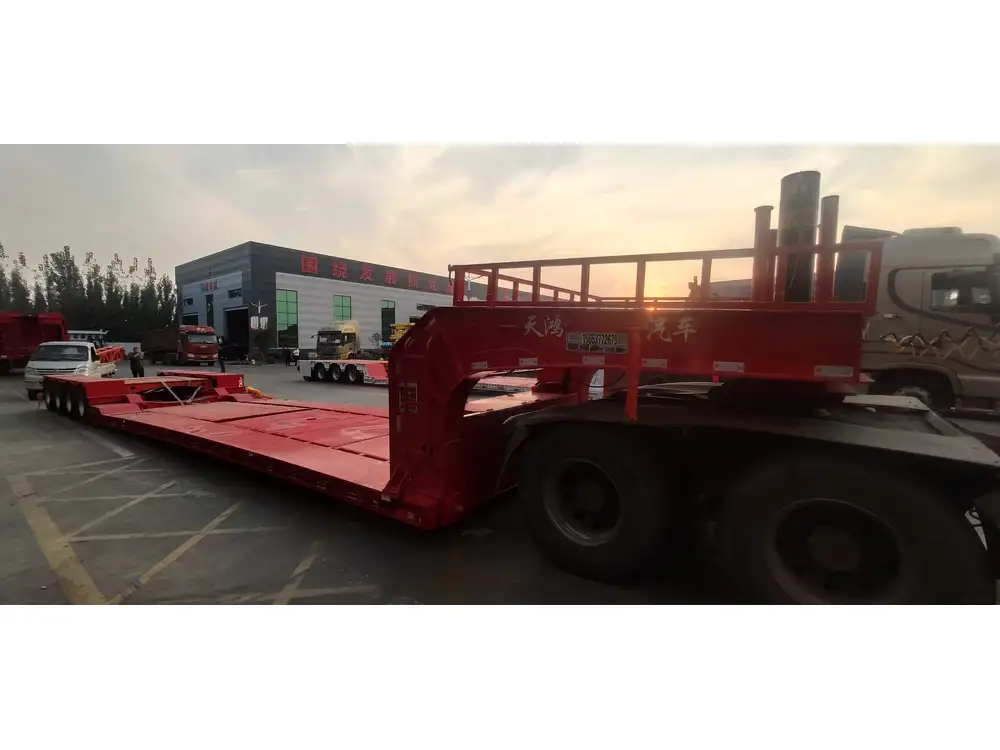Mounting a winch on a flatbed trailer is a strategic enhancement that can streamline the loading and unloading process of heavy equipment, vehicles, or materials. A properly installed winch not only maximizes efficiency but also ensures safety during transport. In this comprehensive guide, we will delve into the nuances of winch installation, exploring everything from selecting the right equipment to detailed installation techniques.
Understanding Winches and Their Benefits
A winch is a mechanical device used for pulling or lifting heavy loads using a spool and cable or chain. Understanding the distinct types of winches is essential for selecting the right one for your flatbed trailer.
Types of Winches
| Type | Description | Ideal Use Case |
|---|---|---|
| Electric Winch | Operated using electric power; easier to deploy and control. | Light to medium-duty tasks. |
| Hydraulic Winch | Powered by hydraulic fluid; ideal for heavy, continuous pulls. | Heavy-duty applications. |
| Manual Winch | Requires manual effort; simpler and more portable. | Occasional, lighter loads. |

Benefits of Installing a Winch
- Efficiency: Expedites the loading and unloading process, saving time and labor.
- Safety: Reduces the risk of injury associated with manual lifting or pushing.
- Versatility: Useful in a variety of situations, from towing vehicles to lifting materials.
Determining the Appropriate Winch for Your Needs
Before installation, it’s imperative to select a winch that aligns with your specific use case. Consider the following factors:
- Weight Capacity: Ensure the winch can handle loads heavier than what you typically transport.
- Power Source: Choose between electric, hydraulic, or manual based on your preference and availability.
- Mounting Area: Assess the flatbed trailer space to determine where the winch will be mounted.
Key Considerations
- Winch Capacity: Ideally, the winch should have a pulling capacity of at least 1.5 times the weight of the heaviest load.
- Cable Length: Ensure the winch comes with adequate cable length for your typical loading scenarios.
- Gear Ratio: A higher gear ratio can provide better pulling power, necessary for heavier loads.

Selecting Installation Tools and Materials
A successful winch installation demands a well-equipped toolbox. Below is a standard list of tools and materials required for mounting a winch on a flatbed trailer.
Tool Checklist
| Tool | Purpose |
|---|---|
| Drill | For creating mounting holes. |
| Wrench Set | To secure bolts and nuts. |
| Socket Set | For fastening larger bolts. |
| Level | Ensures the winch is mounted evenly. |
| Measuring Tape | To measure the correct placement of the winch. |
Material Checklist
| Material | Purpose |
|---|---|
| Winch | Choose appropriate type based on needs. |
| Winch Mounting Plate | Provides a flat surface for installation. |
| Bolts and Nuts | Essential for securing the winch. |
| Wiring Kit | Needed for electric winches for power supply. |
| Heavy-Duty Clevis Hook | For attaching the winch cable to the load. |

Step-by-Step Winch Installation Guide
Step 1: Preparing Your Workspace
Begin by ensuring that your flatbed trailer is parked on a level surface. Have all tools and materials organized for easy access. Wear appropriate safety gear, including gloves and goggles.
Step 2: Choosing the Mounting Location
Select an ideal location on your flatbed trailer for mounting the winch. Common practices include:
- Center of the Bed: Provides evenly distributed pulling force.
- Near the Rear: Facilitates easier access for loading from the back.

Step 3: Marking the Mounting Holes
- Utilize a measuring tape to determine the optimal position for the winch.
- Place the mounting plate on the designated location and mark the screw holes with a marker for accurate drilling.
Step 4: Drilling the Holes
Using a drill, create holes on the marked spots carefully. Be cautious to avoid damaging the trailer’s structure. Ensure to use the appropriate drill bit size for the bolts being used.
Step 5: Attaching the Mounting Plate
- Align the mounting plate with the drilled holes.
- Insert bolts through the holes and place nuts accordingly.
- Secure tightly using a wrench to ensure stability.

Step 6: Mounting the Winch
Carefully place the winch onto the mounting plate. Ensure it is aligned properly, and secure it with the provided bolts. Use a socket set for adequate fastening. Check for stability after securing.
Step 7: Wiring the Winch
If you are using an electric winch:
- Follow the manufacturer’s instructions to connect the winch to the power source.
- Ensure that the wiring is properly insulated to prevent any short circuits.
Step 8: Testing the Winch
Before using the winch for loads, conduct a dry run without any weight attached:
- Operate the winch to check for proper functioning.
- Ensure that cables are unwinding and rewinding smoothly.

Safety Considerations During Winch Operation
Safety during winch operation is paramount. Adhere to the following guidelines to ensure secure handling:
- Check Load Limits: Always confirm the winch’s weight capacity before towing or lifting.
- Inspect Winch and Cable: Regularly inspect the winch and cable for wear and tear to prevent accidents.
- Maintain a Safe Distance: Ensure bystanders remain at a safe distance while in operation.
- Use Proper Rigging Techniques: Utilize appropriate rigging methods to secure loads correctly.
Frequently Asked Questions
How do I know what winch capacity I need?
When selecting a winch, consider the heaviest load you anticipate needing to lift or pull. A good rule of thumb is to choose a winch with a pulling capacity of 1.5 times the weight of the load.

Can I install a winch on any flatbed trailer?
While most flatbed trailers can accommodate a winch, the weight and construction of the trailer may limit the types of winches you can use. Always check your trailer’s specifications before proceeding with installation.
How often should I inspect the winch?
It is advisable to conduct a thorough inspection of your winch before each use. Regular maintenance checks should also be done at least once a month to ensure longevity and safety.
What type of maintenance does a winch require?
Basic maintenance includes cleaning the winch, inspecting cables for fraying, ensuring electrical connections are secure, and lubricating moving parts as recommended by the manufacturer.

Conclusion
Mounting a winch on a flatbed trailer is an investment that enhances the functionality and efficiency of your transportation operations. By following this comprehensive guide, you can ensure that your winch is installed correctly and operates safely. Always prioritize safety and regulatory compliance to maximize the longevity of your equipment while reducing the risk of injuries during operation. Empower your flatbed trailer capability today by integrating a winch, turning your transport challenges into seamless solutions.



